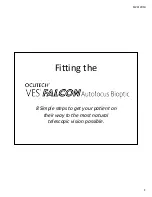
EN
Care and cleaning of Optics:
WARNING: Improper cleaning of optical components may void the
warranty!
Optical components of a telescope will over time get dirty. The amount of
dirt and or dust collected onto a lens or mirror should only be removed with
the utmost care and this is at times best left to people with experience in
this procedure. A considerable amount of dirt or dust must be present on
the optical surface before one will notice the effect visually.
1. Keeping the dust caps during storage of the telescope will reduce the
amount of dust collected.
2. After using the telescope there might be dew condensation on the optical
surfaces. When the telesecope is brought inside remove the dust caps und
allow the moisture to evaporate naturally. Point the telescope downwards so
as to minimize the collection of airborne dust.
3. Once the moisture is gone then replace the dust caps.
4. If you wish to remove dust from the lenses or mirrors you first should try
using a can of filtered compressed air. Remove the dust cap and the dew
shield in the case of the refractor style of telescope, or take the mirror cell
out of the reflecting type. Once you are able to freely blow across the
surface of the optics then begin by first pointing the can away from the piece
and gently expel some air. This will remove any condensate in the air can
lines and clear off dust that may have accumulated on the discharge tube.
Next using short quick bursts of air carefully remove the dust particles.
DO NOT HOLD THE TRIGGER OF THE COMPRESSED AIR FOR TOO
LONG AS CONDENSATE MIGHT BE BLOWN OUT ACROSS THE
OPTICAL SURFACE.
The optics of your telescope should last a long time before they generally
require major cleaning. By keeping the dust caps on and avoiding the
temptation to handel the lenses or mirrors you will find that very little is need
in the way of optical maintenance.











